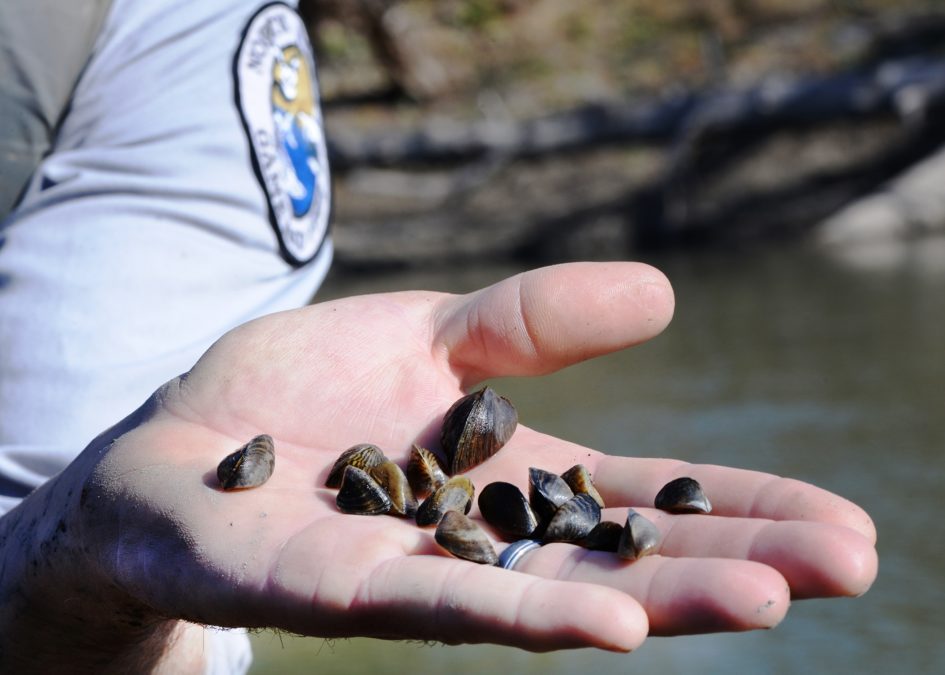One of the many North Dakota hometowns I claim is LaMoure, in the southeastern part of the state. The James River runs by just off the western edge of town, and it was there, at a popular fishing spot called the James River Dam site, that some of the first Asian carp in the state were detected a few years ago.
While I wasn’t there when that occurred, it did cross my mind on a July Friday afternoon last summer when I got a call from North Dakota Game and Fish state headquarters in Bismarck asking if I could assist in transporting the first adult zebra mussel found in North Dakota.
City of Fargo employees had found it attached to a water intake valve and suspected it was a zebra mussel, but we wanted expert confirmation. So on a hot Friday in July I was much more directly involved in the unfortunate, but real history of invasive species in North Dakota.
While Asian carp are still detected in the James, they don’t appear to have reproduced there yet. And while more zebra mussel adults were discovered in the Red later in the fall, to date they haven’t been found anywhere else in the state.
We can’t do much about these recent discoveries, but we can do a lot to prevent transport of aquatic nuisance species to other locations.
Current regulations require:
- All aquatic vegetation must be removed from boats, personal watercraft, trailers and fishing equipment such as fishing poles, bait buckets, lures and waders before leaving a body of water. That means “vegetation free” when transporting watercraft and/or equipment away from a boat ramp, landing area or shoreline. Time out of the water needed to remove aquatic vegetation at the immediate water access area is allowed.
- All water must be drained from boats and other watercraft, including bilges, livewells, baitwells and motors before leaving a water body.
- All drain plugs that may hold back water must be removed, and water draining devices must be open, on all watercraft and recreational, commercial and construction equipment bilges and confined spaces, during any out-of-water transport of same.
- Transportation of fish in or on ice is allowed.
- Live aquatic bait or aquatic vegetation may not be transported into North Dakota.
- All legal live aquatic organisms used by anglers, including legal baitfish (fathead minnows), amphibians (salamanders and frogs), invertebrates (crayfish and leeches) and insects must be purchased and/or trapped in North Dakota.
- Anglers may not transport live bait in water away from the Red River (Class I ANS infested waters). All water must be drained from bait buckets as anglers leave the shore, or remove their boat from the water. Anglers must properly dispose of unused bait away from the river, as dumping bait in the water or on shore is illegal.
- In all other waters not infested with Class I ANS species, anglers can transport live bait in water in containers of five gallons or less in volume.
Rules and regulations alone won’t stop the spread of zebra mussels, Asian carp or other ANS such as curly leaf pondweed, salt cedar or Eurasian water milfoil. Everyone, not just boaters and anglers, but people who use canoes, personal watercraft and even even paddle boats and board, as well as duck and goose hunters in the fall, should take these rules seriously.
We should all agree that our goal is to do the best we can to prevent any ANS from moving from one place to another.



